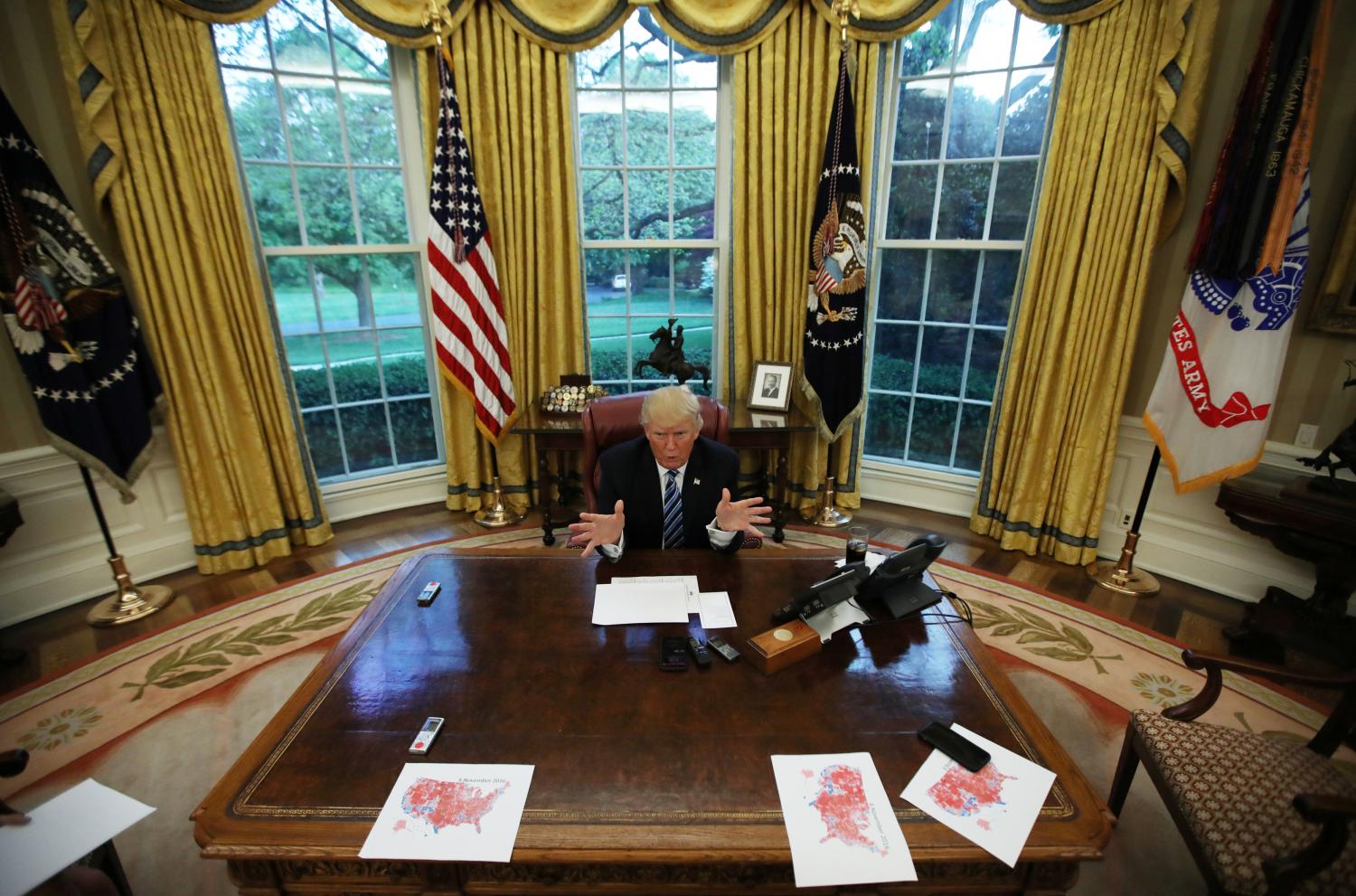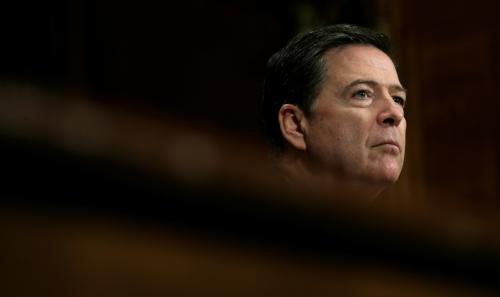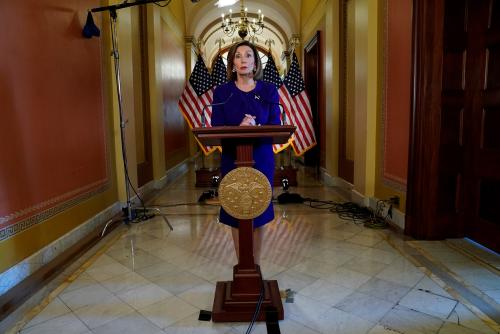This post is part of series by Brookings experts on Trump in 2018.
The most extraordinary aspect of Donald Trump’s unusual presidency is how early and how often the word “impeachment” has been used. No other president in American history, including those who have actually been impeached, have had this possibility hanging over their heads in their first year in office. But Democrats be warned: the most enthusiastic proponents of impeachment can really screw this one up.
The impeachment talk began when Trump asked then-FBI Director James Comey to go easy on his investigation of then-National Security Advisor, Michael Flynn and then fired Comey. This was reminiscent of the famous “Saturday Night Massacre” when President Nixon forced Justice Department officials to resign until he found someone willing to fire Archibald Cox, the Special Prosecutor appointed to look into crimes in Nixon’s re-election campaign. Even Steve Bannon, Trump’s advisor, admirer, strategist, and fellow traveler on the “alt-right” told the television show “60 Minutes” that it was “the biggest mistake in modern political history.”
But in addition to Trump’s own self-inflicted wounds the impeachment talk has been kept alive by the continuing severity of the issues under investigation. The list includes:
- Obstruction of justice. (That’s the one that got Richard Nixon.)
- Money laundering.
- Possible collusion with Russia and its interference in a federal election
- Violation of the emoluments clause of the Constitution
But impeachment is neither a legal proceeding, nor is it a political proceeding alone. It is both. Moreover, when it ceases to be bi-partisan, an impeachment proceeding poses a threat to the party that pursues it. The 1998 impeachment of Bill Clinton that resulted from his affair with an intern failed to result in a conviction in the Senate. It was largely a Republican-only effort, attracting only 5 Democratic votes for impeachment in the House. This was not lost on voters in the 1998 midterms who gave the Democrats 5 extra seats, the first time since 1934 that the party out of power failed to gain seats in a mid-term election.
So, in the coming year, Democrats need to tread cautiously when it comes to impeachment. And some are jumping the gun. So far three Democratic Congressman have introduced articles of Impeachment. The most recent, Congressman Al Green (D-Tex.) introduced his to a nearly empty House of Representatives and against the wishes of House Democratic Leaders Nancy Pelosi (Calif.) and Steny Hoyer (Md.). The House voted 364-58 on a motion to table—effectively killing the effort. However, Green’s impeachment charge didn’t mention Russia or obstruction of justice. Instead, it focused on accusations that Trump engendered “racial antipathy and bigotry.”
The next Democrat to jump the gun is California billionaire Tom Steyer who is funding television commercials (featuring himself of course) and a website that argues more traditional grounds for impeachment: “Donald Trump has brought us to the brink of nuclear war, obstructed justice, and taken money from foreign governments. We need to impeach this dangerous president.”
Steyer’s $10 million ad buy asks viewers to tell their congressman that they have a “moral responsibility” to impeach Trump. And he’s putting another $20 million into a petition drive to impeach Trump. Not only is this a colossal waste of money (unless you are trying to build a base and run for governor which many think is the real motive here); it is, more importantly, counter-productive.
Democratic members of Congress, having lived through the first year of the Trump Administration, do not need to be cajoled by the grassroots to vote for impeachment. But they do need to pick up seats to control the House of Representatives and that means winning in some of those swing districts where disenchanted Trump voters might make the difference. Minority Leader Nancy Pelosi knows a thing or two about winning, and she told the LA Times’ Doyle McManus “I’m not making [impeachment] a priority…If you’re going to go down the impeachment path, you have to know you can do it not in a partisan way.”
Steyer has come in for criticism from other leaders in the Democratic Party, as well. His response has been that Democratic leaders show “a disconnect from people outside of Washington.” Putting aside for a moment that this is an odd thing for a billionaire to say, the fact is that Steyer’s vanity project has the potential to boomerang. It’s too early and impeachment is too important to become the sole purview of one party or the other.
On August 7, 1974, three Republicans walked into President Richard Nixon’s office: Senator Barry Goldwater (Ariz.), House Minority Leader John Rhodes (Ariz.) and Senate Minority leader Hugh Scott (Pa.). They had a message to tell him. There were more than enough votes in the House to impeach and there weren’t enough votes in the Senate to acquit. They effectively told Nixon that his presidency was over and he was to choose how it would end. Nixon’s own party was ready to dump him. Faced with the evidence members of Congress didn’t need a grassroots campaign to tell them what to do.
If Tom Steyer really wants to see Trump impeached he should stop turning this into a partisan measure. If he really wants to put a stop to the Trump agenda, there are hundreds of Democratic congressional candidates who could put those $30 million to better use.
Elaine C. Kamarck is a Senior Fellow at the Brookings Institution and author of Primary Politics: Everything You Need to Know about How America Nominates Its Presidential Candidates. She is a member of the Democratic National Committee and a superdelegate to the Democratic convention.
The Brookings Institution is committed to quality, independence, and impact.
We are supported by a diverse array of funders. In line with our values and policies, each Brookings publication represents the sole views of its author(s).












Commentary
Trump in 2018: Will Democrats be smart about impeachment?
December 29, 2017